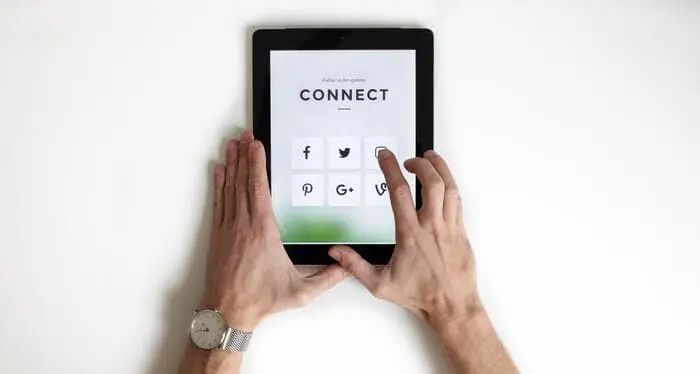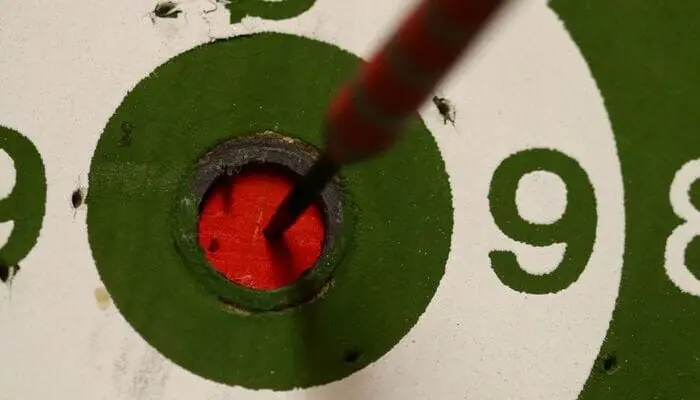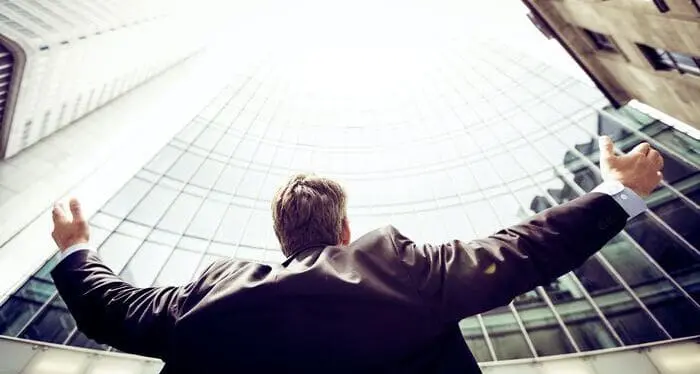B2B sales strategy is critical to selling business to business. Meaning, when you’re trying to sell your product or service to somebody or some people who work in another business.
If you’re in B2B sales, you face some unique challenges. Specifically,
- how do you identify who is the right person to talk to who might be interested in buying your product or service?
- does that person have a budget to be able to invest in your product or service?
- who are all the other people that are involved in this decision?
If this sounds like a situation you’re faced with, there are only a few skills that you need to master to be successful in selling business to business. So let’s talk about a few of those skills and how you can apply them.
Key B2B Sales Strategy & Skills to Master
(1:05)
Let’s get into it. If you’ve watched my other videos or read other posts, I’m going to start with something you’ve heard me mention before that I think is fundamental when it comes to selling to other businesses.
Strategy #1 – Get the Attention of Buyers

The first step in your sales process is getting the attention of your prospects. This is not something that you leave up to the marketing department.
You need to focus on getting the attention of the person or people who are interested in buying your product or service. Now, there are all sorts of different ways that you can do that, and you can check other videos on how, but my suggestion is you pick three strategies that you want to focus your time and attention on to get attention.
So, for example, if you’re selling a service, you might find that participating in association events is a great way to connect with others and generate leads. If that’s the case, build yourself an “association strategy”.
- Who are all the associations you want to connect with?
- Who are the key people within those organizations?
- Can you get a list of attendees?
- Which events are you going to attend?
- Do you want to speak at an event?
So, you want to identify the three methods, the three ways that you can get in front of your potential buyers or your potential prospects to get their attention with
- your ideas,
- your views,
- your company’s product,
- the benefits it brings,
- et cetera.
So pick three, go after it, and give it all you’ve got.
Strategy #2 – Offer Value in B2B Sales
(2:23)
You’ve also got to make sure that you’re offering value.
Now, I do a lot of work with sales teams on the idea of selling value over price, but I want to give you the three fundamental steps that you can use to always ensure you’re selling based on value, which in turn can overcome or at least support you when it comes to discussing price or dealing with price objections.
Offer Value: Identify Your Value Assets
Number one, have a bucket or a bin (philosophically speaking) of your value assets. What are those things that your potential customers, your prospects, would find value in?
Now that’s going to differ depending on what you sell.
- Maybe it’s a special report,
- maybe it’s an assessment,
- maybe it’s like an onsite assessment of their situation, their technology, or their processes.
You’ve got to identify what are those two or three things (or more if possible), that you can offer that sets you apart from what your competitors are doing. But most importantly, offers value to your prospect. Now, here’s the key here. Talk to your existing customers or clients and ask them this question:
If you didn’t know our company, if you didn’t know me, what would be helpful to you in order to identify whether you should work with us or not?
You’ll find your clients will give you ideas that you can then turn into your value assets. So that’s step one.
Offer Value: Give to Get

(3:40)
Step two, I want you to think about “give to get“.
Now, you’ve heard that a million times, but it really is a mindset.
You’ve got to be focusing time every single day to give.
- Send out a report,
- send out information,
- send out a thank you card,
- suggest a presentation to somebody who you haven’t met before,
- suggest an assessment on site with somebody you haven’t met before.
It’s about giving these value assets on a regular basis.
I often say, people say to me, are you a hunter or a farmer? I’m neither. I’m a seed planter and I’m going to focus on adding value in every situation I can. Because, eventually that comes back in a positive way.
Offer Value: Reassess Your Value Assets Regularly
(4:17)
Here’s the third thing relative to value that I want you to consider. You’ve created your value assets, you’re focusing on giving at all times.
I want you to constantly reassess about every six months:
- Are these value assets enough?
- Is there something else I can offer?
- Should I stop offering something and change it?
Because here’s the problem. When you create these value assets and you start to give them out, when you start to add value, some are going to work well, and some aren’t going to work at all. You want to do more of the ones that work, scrap the ones that don’t, and then identify other ways that you can add value.
You see, value evolves over time, and you’ve got to be in tune with your prospects, with your existing customers to identify what else, what other value can you offer to your prospects?
If you sell business to business, you’re invariably going to hit a number of objections.
Now, I’ve done other videos regarding objections, but there’s one you’re going to hit almost every single time, and that is a price objection. Now, these come in a variety of forms and sometimes the price objection can actually mean something else, but you’ve got to be ready to respond.
My suggestion is to be prepared to calculate the return on investment that your prospect will get for buying your product or buying your service.
Now, again, how you approach that is going to be different depending on what you sell. But think of it at this level:
If somebody is going to invest in your product or service, what is the average sale value that you’re probably going to propose to them? (This could be based on volume or time or some other variable.)
Then, based on that, identify what is the additional value, both direct and indirect, that your prospect will gain from working with your company, from buying your product. What are the other “tertiary benefits”, direct and indirect value, they’ll get.
So for example, if I’m selling you widgets, it’s not just the price of the widget.
- It might be accessibility to our engineering staff for further custom requirements.
- It might be access directly to our trucking company who will deliver our product to your door when you need it,.
There are lots of other benefits that we often forget about because we’re living in those benefits. They don’t mean anything to us, but they do to our prospects.
You’ve got to be prepared to speak to that and help quantify those different benefits so that you can help your prospect understand the return on investment.
So a price objection sometimes can be something else, but you want to be prepared to talk in the form of “total cost of ownership” or “return on investment”. What are the direct and indirect benefits beyond just this initial thing that you’re going to get from us from working with our company?
Quantify those and you’ll be prepared to deal with any price objection that comes your way.
Strategy #3 – Always Assume the Close

(6:54)
This last B2B sales strategy is one of my favorites. A long time ago, I started assuming the close. It goes back to when I was in my twenties, which if you can’t tell, was a while ago. 😉
So when I used to sell cars, what I would find is I didn’t know when to move from, we’re having a good conversation. I seem to be answering your questions. You seem interested. I didn’t know how to flip from there to close.
So my manager at one point said, “Just ask ’em if they want to buy the car, Shawn. It’s not that hard.”
So I thought, well, that sounds a little awkward. So, I just started making suggestions. So we’re at a point in that conversation of buying that car and I’m thinking, look, yeah, I think they’re interested. I would just assume they want to move forward with the sale.
- I might say something like, “Well, it sounds like we’ve answered your questions. Why don’t you come into my office? We can look at some numbers and see if we can get you in this car.”
- Or, I might say something similar, but different. “Well, it sounds like all of your questions have been answered unless there’s anything else. Let’s get the paperwork done and get you heading on down the road in this car.”
(7:52)
You see, it’s that simple.
It’s just making the assumption that if you’ve got nothing else here, why don’t we talk about what this will look like relative to selling it to you, whether it’s a product or a service?
So, assuming the close became my way of just transitioning, but today it’s much more strategic.
You see, a lot of times we don’t know where we are in the sales process. We think we’re ready to close, and then we get an objection. Then we get another objection.
So assuming the close helps you flush objections out. Because what happens is you say,
- “Well, it sounds like we’ve addressed everything here. Let’s get the paperwork done. Let’s sign it. We’ll get you on your way.”
- And the customer goes, “Hold on a second. I’m not so sure about this or that.”
- “Oh, okay, let’s talk about that.”
So if you’re selling B2B, always assume the close.
Again, before you jump to this, you want to make sure
- you’ve gone through a good discovery dialogue,
- you’ve talked about price, and
- they’re clear on what the offer is.
But once you’re there, if you assume the close, the worst that’s going to happen is they’re going to give you some other objections, which allows you to deal with them, and then again, move back to assuming the close.
So try that strategy.
Develop & Master Your B2B Sales Strategy

(8:54)
There you have it, a key three-step B2B sales strategy you need to master to be successful in selling B2B.
Now, if you want to check out some of my other videos, make sure you visit my YouTube channel. There are lots of other videos there.
Comment below with other topics you’d like to hear or questions you have. I’ll do my best to get back to you.

© Shawn Casemore 2023. All Rights Reserved.

Share This Article
Choose Your Platform: Facebook Twitter Google Plus Linkedin